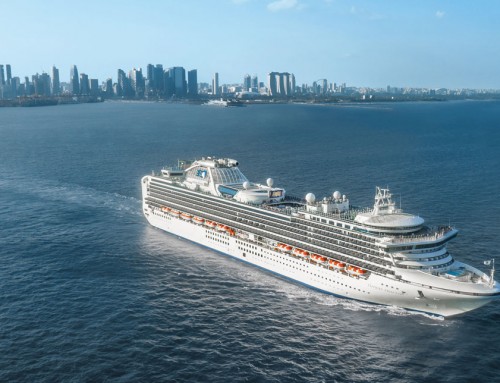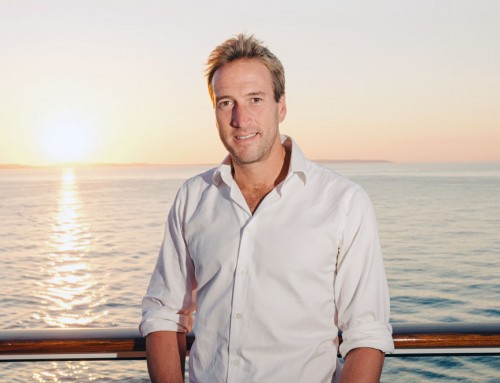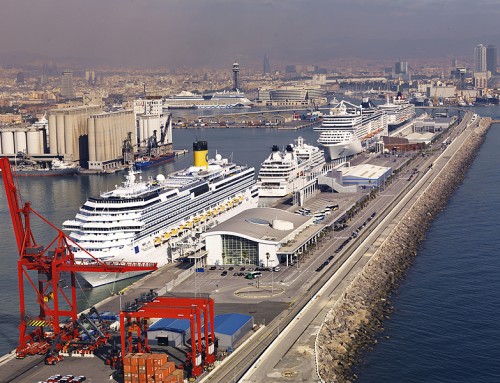As the first cruise passengers to visit the town of Suakin in Sudan since 2006, we might have expected a warmer welcome – and I’m not talking about the 30-degree heat. But despite the best efforts of Spirit of Adventure’s captain, Frank Allica to arrive before the harbour pilots were engaged in their Friday prayers, we reached the pilot station at just the wrong time.
Even when the pilots had finished at the mosque, we were not able to enter port straight away – apparently there were no free berths, which seemed strange after we had been told the port’s trade had declined since the development of Port Sudan, 40 miles to the north.
The captain’s frustration was barely detectable in the tone of his frequent announcements over the Tannoy, and we were grateful for the updates.
Eventually we were in, and tying up at a bleak quay more used to handling livestock. There was no rush to leave the ship. As the excursion handbook explained: “We do not recommend going ashore independently in Suakin since there is very little to do in the vicinity of the port and the area is not geared towards visitors.”
This country – the size of mainland Europe, but with a population of just 40 million – is, after all, a nation which has been riven by strife ever since gaining independence from British and Egyptian rule in 1956. Its president, Omar al-Bashir is wanted for war crimes and crimes against humanity in the long-running dispute with the western region of Darfur.
So what were we doing here, you might ask. The purpose of our visit was to tour the lost city of Suakin, a circular island which had been a thriving port from the 17th century, was in its prime under Ottoman rule of the region, but which had been in decline ever since the opening of the Suez Canal.
Lectures by James Duguid, the managing director of Spirit of Adventure who is involved in a project to re-build the town, had shown us pictures of a bustling port, and of its gradual decline over recent decades.
But they did not prepare me for the scenes of almost total devastation that confronted us as we left our mini-buses and walked across the short causeway from the mainland. Hardly a single building remains intact. Everywhere were heaps of rubble which on closer examination turned out to be blocks of coral which had been used for building.
Isolated walls remained upright, many of them looking perilously close to complete collapse.
Only the island’s mosque remained relatively undamaged, and even its minaret – which is built more on the lines of Wayne Rooney than Naomi Campbell, short and sturdy rather than tall and slender – is beginning to lean like the Tower of Pisa.
Sudan’s Minister of Culture, Mohamed Yusuf, had made a seven-hour drive from Khartoum to greet us, and in his pristine white robes and head-dress, he was easy to spot among the mounds of honey-coloured debris, leading his 250 visitors almost like the Pied Piper.
There were a few locals there to greet us as well. Two budding enterpreneurs had laid out exotic sea-shells and lumps of coral on the ground, unaware that we would not be allowed to take them back home because of EU conservation laws.
Most delightful were the groups of children happy to pose innocently and smile broadly for the cameras – and not holding out grasping hands for money, as their Egyptian counterparts would have done.
Because of our late arrival into port, it was almost dark by the time we reached the Suakin Tourist Village – a bold venture given that the number of tourists must be tiny. Local dancers, some dressed as witch doctors but wearing football shirts, put on a brave show, but were outshone by a half-dozen elegant camels which raced for our entertainment – though I suspect they are used to competing over longer distances than the 50 metre sprint they were confined to.
Then it was back to the ship, past acres of shanty-towns, and dozens of huge trucks, parked up after leaving the ferries which had squeezed us out of the main port.
It was a day which, for a coward like me, was the epitome of so-called adventure cruising. I had briefly experienced a culture completely new to me, in an environment which was simultaneously welcoming yet mildly threatening, and at the end of it I was able to return to the air-conditioned comfort of my cabin.
Unexpectedly, in a Muslim country where alcohol is forbidden, the local authorities had allowed the ship to keep its bars open all evening. Our Sudanese welcome was a warm one after all.





Leave A Comment